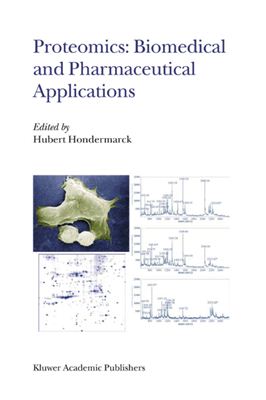EBook ISBN: 1-4020-2323-5
Print ISBN: 1-4020-2322-7
395 pages
2004 Kluwer Academic Publishers (Springer Science + Business Media, Inc.)
Preface
A constancy in human history is that new discoveries have systematically been used to improve health and increase the duration and quality of life. From the use of flints to perform primitive surgery during prehistory, to the preparation of plant extracts to cure diseases throughout the world and historic times, the will to tu new basic knowledge into practical tools for medicine is probably a shared value of all civilizations and cultures. During the first part the 20th century, shortly after discovering the radioactive compounds, radium and polonium, the physicist Marie Curie created in Paris the first center for radiotherapy, demonstrating that discovery in basic science can have a rapid and significant impact in medicine. The second half of the last century was intellectually dominated by the discovery of the genetic code and the description of the structure of its carrying molecule, the DNA, with the end of this era essentially marked by the complete sequencing of the human genome. This major achievement was based on considerable technological progress in biochemistry and bioinformatics, but a significant impetus was the promise of a better understanding of human health through the discovery of genes involved in pathology. However, during the course of human genome sequencing, the scientific community and the public progressively realized that the accomplishment of this huge project was not going to revolutionize, on its own, the field of biomedicine. In large part, this was due to the presence of a significant number of genes for which function was (and remains) unknown, and because biology is much more complex than the structure and functioning of nucleic acids. In a way, the genome project somehow contributed, for a while, to shorten our vision of biology.
Print ISBN: 1-4020-2322-7
395 pages
2004 Kluwer Academic Publishers (Springer Science + Business Media, Inc.)
Preface
A constancy in human history is that new discoveries have systematically been used to improve health and increase the duration and quality of life. From the use of flints to perform primitive surgery during prehistory, to the preparation of plant extracts to cure diseases throughout the world and historic times, the will to tu new basic knowledge into practical tools for medicine is probably a shared value of all civilizations and cultures. During the first part the 20th century, shortly after discovering the radioactive compounds, radium and polonium, the physicist Marie Curie created in Paris the first center for radiotherapy, demonstrating that discovery in basic science can have a rapid and significant impact in medicine. The second half of the last century was intellectually dominated by the discovery of the genetic code and the description of the structure of its carrying molecule, the DNA, with the end of this era essentially marked by the complete sequencing of the human genome. This major achievement was based on considerable technological progress in biochemistry and bioinformatics, but a significant impetus was the promise of a better understanding of human health through the discovery of genes involved in pathology. However, during the course of human genome sequencing, the scientific community and the public progressively realized that the accomplishment of this huge project was not going to revolutionize, on its own, the field of biomedicine. In large part, this was due to the presence of a significant number of genes for which function was (and remains) unknown, and because biology is much more complex than the structure and functioning of nucleic acids. In a way, the genome project somehow contributed, for a while, to shorten our vision of biology.

